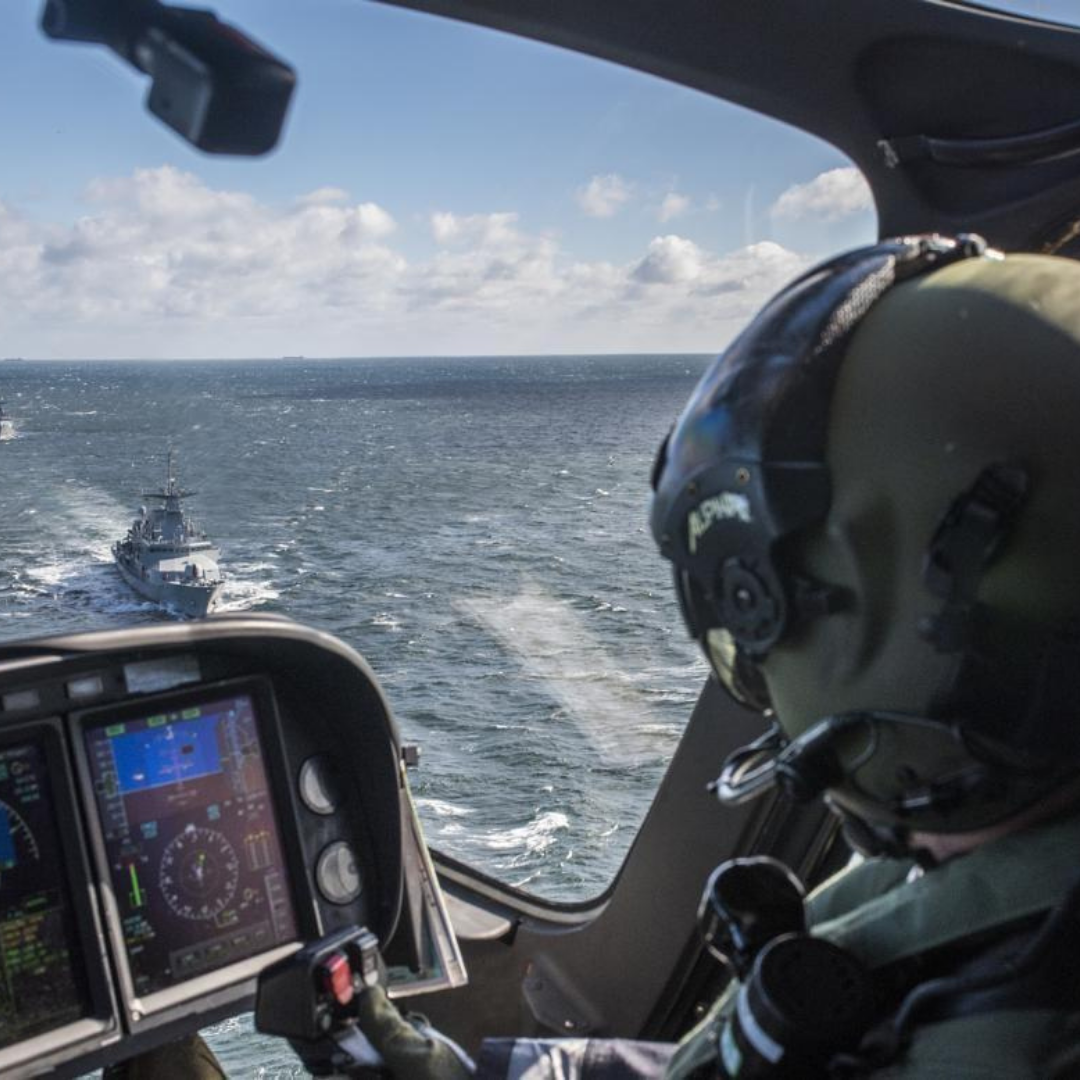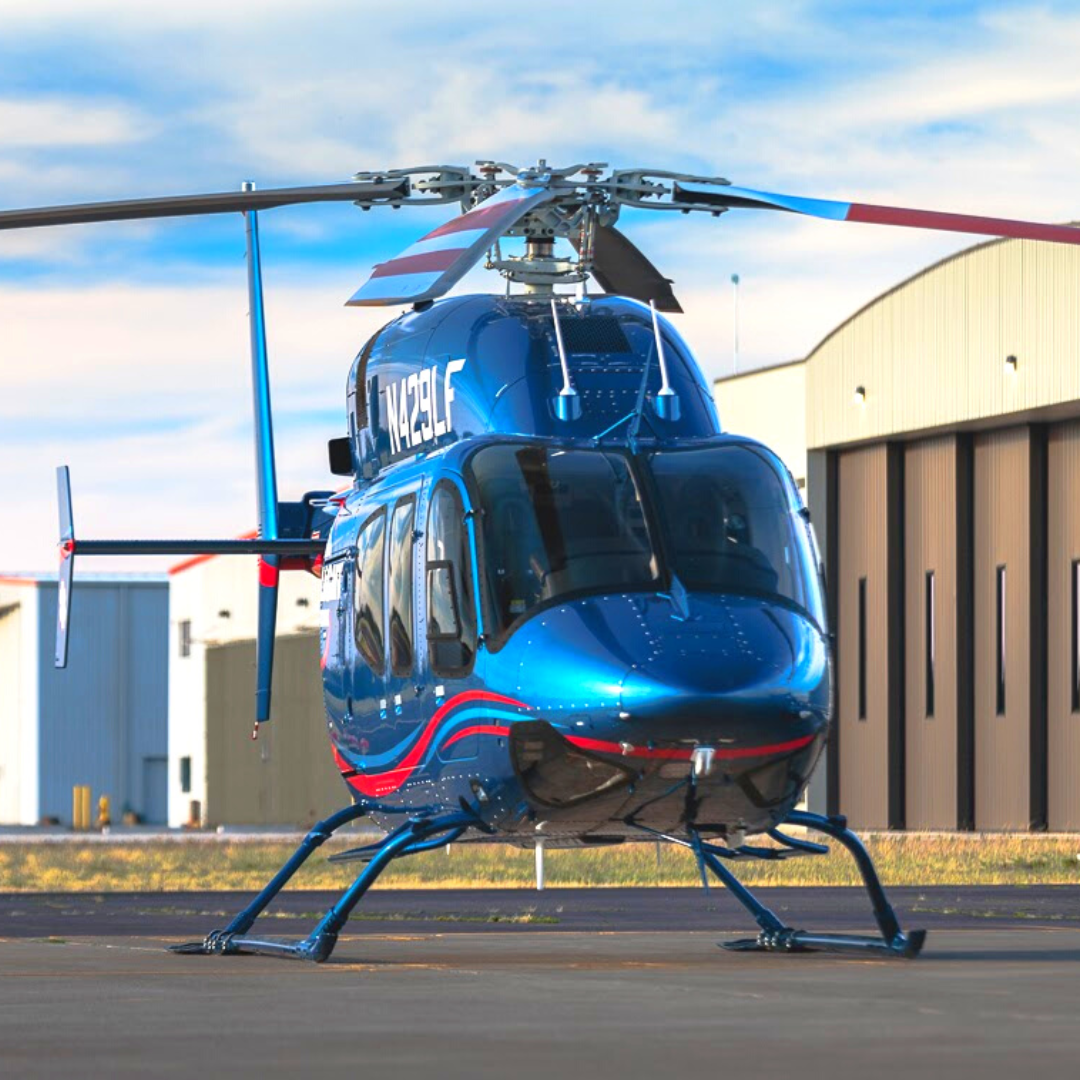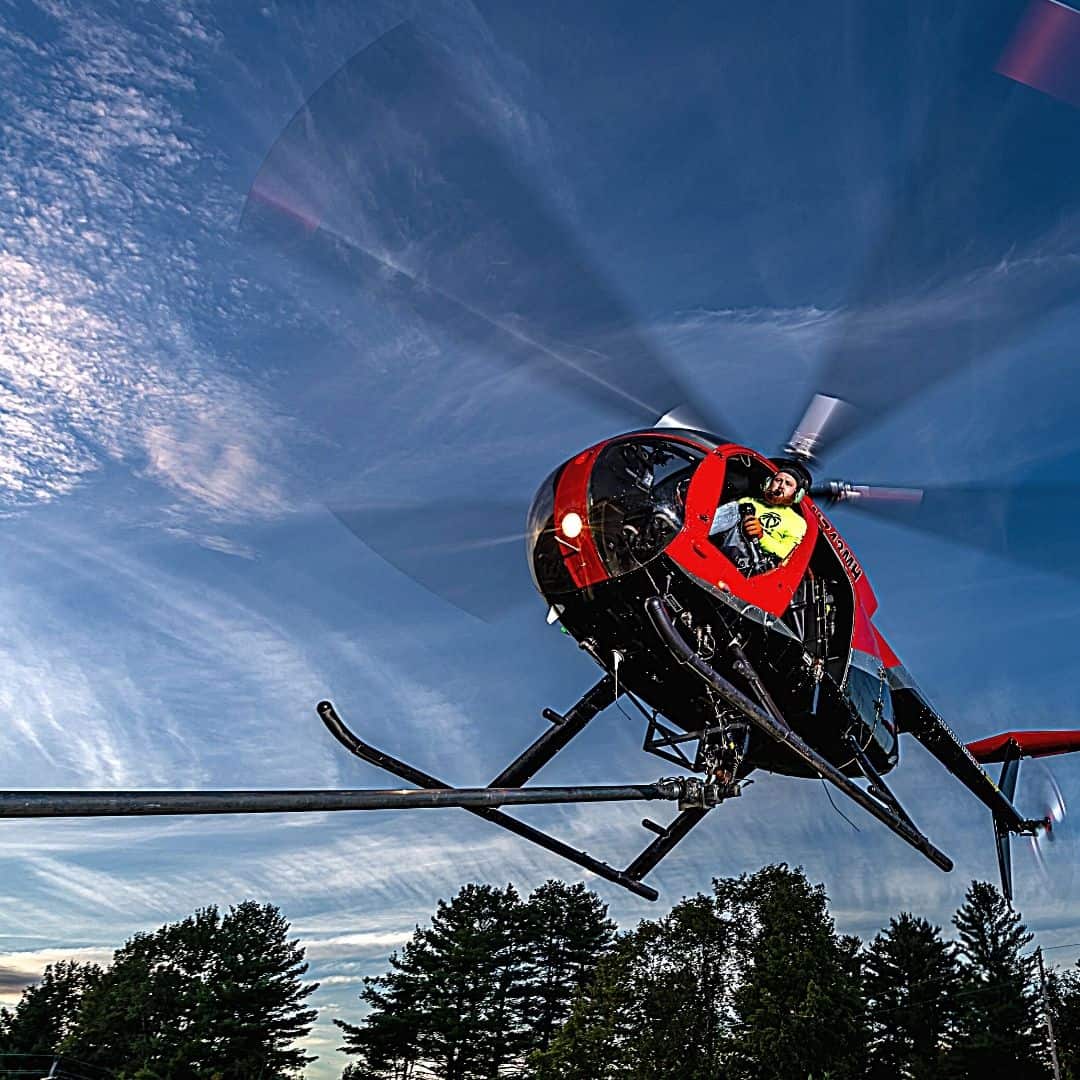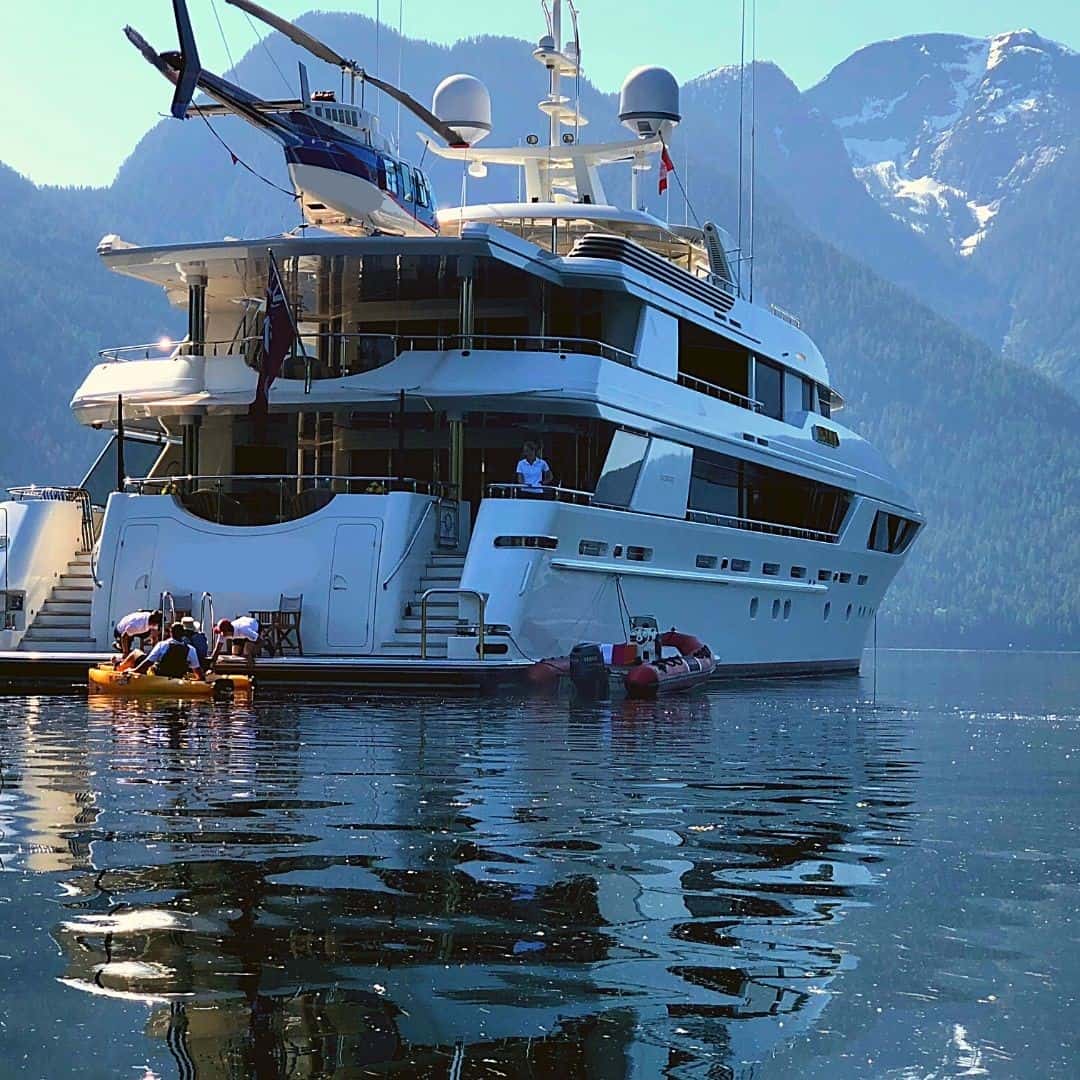by Dec Daly
Declan Daly retired from the Irish Air Corps as a Commandant after serving as an Officer and Pilot for 20 years. He has accrued over 4000 hours in various helicopters to include the SA342 Gazelle, AS365 Dauphin, EC135, and the AW139 in the Multi-Mission environment of the Irish Air Corps and now, after retirement, he finds himself back in the AW139 but this time in the VIP role. The following are two examples of a “Day in The Life as an Irish Air Corps Pilot!
The Rotor Break
How I got there.
I’ve recently retired from the Irish Air Corps, so I get to write this story from a position of looking back at a big chunk of my life for the last twenty years. Like pretty much any account of helicopter flying, there’s no one way to get there and usually, no two days are the same. My own route to flying helicopters for the Irish Air Corps lives up to those common characteristics!
By way of background, the Air Corps is the aviation branch of the military in Ireland and No 3 Ops Wing is the helicopter wing of the Air Corps. In addition to purely military tasks, the IAC also undertakes a lot of what we call ATCP or Aid to the Civil Power missions (security) and Aid to the Civil Authority missions (a long, long list including everything from firefighting to HEMS). All pilots are officers unlike some other countries and this means that straight from the start, you will have a least two full-time jobs, to be a pilot and to manage some part or other of the machine that is the Air Corps.
These days, the helicopter fleet consists of H135s and AW139s. When I joined the Air Corps as a recruit in February 1999 however, we were still using the legacy fleet of Gazelle, Alouette, and Dauphin. This worked out great for me as it meant when I got my Cadetship to be a pilot in October ’99 I was going to fly both our legacy fleet and the new machines delivered during my career.

The Irish Air Corps, SF260WE Marchetti Trainer aircraft
Everyone, however, starts on fixed wing in the Air Corps, so once my class had returned from nine months in the Defence Forces Training Centre in the Curragh, where all potential officers from all services start their career, I got to fly the SF260WE Marchetti. This was a sportscar for a basic trainer and we all did 150hrs covering all the usual from straight and level up to IFR and formation flying. Great times, once you’re fairly confident that you’ll make it through the course and get your wings.
Basic helicopter training, the HCC or Helicopter Conversion Course was conducted on the SA342L Gazelle. This was another dream machine for a young pilot with more power than entirely necessary and a light touch required on the controls. The usual route from here for a newly minted 2nd Lieutenant would be onto the Allouette III, which had provided stalwart service for the Air Corps in roles ranging from SAR to border security, but due to where the vacancies lay at the time, my class went straight onto the SA365Fi as Dauphin copilots. It was here that I got to develop as a pilot in a real sense, seeing roles such as SAR, trooping, VIP and air ambulance flying for the first time. Our Dauphins were very overloaded with first-generation glass cockpit avionics so I also learned a lot about rolling takeoffs and keeping your airspeed up until short finals when carrying a fully-loaded cabin.
Above, an Irish Air Corps AS365 Fi Dauphin, Photo courtesy Jaqian at en.wikipedia [CC BY-SA]
In 2005, I got to be on the team that introduced the EC135 into Air Corps service. This was a great opportunity to see something completely new to the service – with the Allouette having been around since 1963 and the Dauphin since 1986, some pilots would have gone their whole career without seeing a new machine on the apron.


The Air Corps operated a total of eight Alouette IIIs between 1963 and 2007 and operated the AS365Fi Dauphin from 1986 to 2006,
replaced by the Leonardo AW139
I spent another three years or so flying EC135s in GASU – the Garda Air Support Unit. This is the air support unit for the Irish police force which, for a variety of reasons, is provided with Garda owned helicopters on the military register with military pilots. Again, great flying and good times learning about the job of another organ of the state. I then moved back to No 3 Ops Wing proper (GASU was about 100metres / several million miles away – you went into the building and disappeared for years) and converted onto the then recently delivered AW139. Doing what you may ask? Well the list of No 3 Ops Wing activities is pretty long and no one has only one job, so I’ve picked two examples that I hope highlight what happens there.


The EC135 operated by the Air Corps for the Garda Air Support Unit
Joint Exercise
Ask any Ops Officer ( or at the time, me) to organize a large scale week-long multi-service firing exercise and you will immediately find them (me) running away and hiding in a corner, crying. Tell them (me) that someone else is doing all the organizing and they will immediately try to shoehorn in as many of their own assets as possible. Tell them (me) that they get to do most of the flying and you’ll see the frown turn upside down.


Cockpit view of a “Day in The Life of an Irish Air Corps Pilot”
A joint services shoot involving artillery, naval vessel guns, and fixed-wing rockets and machine guns start to get complex quick. I tried to squeeze in serials for our own helicopter-mounted machine guns but the time windows each day were already getting tight. The only area in Ireland really suitable for a shoot like this is the D 13 in Cork. This is an offshore naval gunnery range, but in this case, everyone was getting a go.
Bringing together so many different weapons and firing platforms from different units and services meant that before a round was fired or an hour was flown, a series of comprehensive briefs were held, where all the main players get face to face and trash out problems. The end result from an Air Corps perspective was that the fixed-wing PC 9s would deploy to Waterford airport in order to be closer to the range and maintain their required fuel reserves while still allowing a bit of flexibility in their playtime over the target. For us in the AW139s, we would position a fuel bowser just behind the firing line along with all the support equipment for the whole shoot.
The day itself starts early – we briefed as a crew the day before, so the morning amounts to the usual weather and route brief, any changes to the plan and walk for the heli. For the moment, there’s three of us on board, two pilots and a crewman whos’ role is to ensure the safety of everyone in the cabin and also stop me from hitting the tail off solid objects when we land off the airfield.
As per the plan, we do a visual and radar sweep of the whole range area before landing. Warnings similar to NOTAMS are issued for the seafaring community to stay clear, but just like with NOTAMS, there’s always one person who forgets to read them. In this case, that one person is in a sailboat and once we call it in, we land for fuel and wait for the Naval Service ships on the scene to hustle them out of the way, as fast as a sailboat can actually hustle….
It’s here that we meet our passengers for the day – an artillery unit forward observation team who will be calling the fall of shot for some of the long-range shots being taken by the arty and ships. Some of these guys are doing aerial FOO work for the first time, others have seen it all before so we’re aware there’ll be a bit of teaching going on in the back. For us, this translates into more chatter on the intercom and increased fuel burn as it takes longer to get everything done.
Once everything is set and the range is cleared again, we get airborne. The danger area, or more to the point the safety area we need, is basically a rectangular box extending from just onshore to about 30km offshore. We route East initially to clear the box so that the Cavalry unit present can get started firing their vehicle-mounted .50 calibre and 20mm weapons at targets within visual range while we scoot out about 12km for the artillery shoot.


Irish Air Corps 112 at UH, Galway. Picture courtesy of David McGrath, Galway Helicopter Movements https://www.facebook.com/helimoves/
Once in position, our job as aircrew is actually pretty simple. Get close to the edge of the safety box and hover at various heights while the team in the back call in the shellfire from onshore. We’ve inputted the coordinates of the safety box in the FMS so that it shows up on our screen, and then sit and wait. It feels like you could get closer to the killer tomato style target until you see the first barrage fire impacting around it. A few km away feels fine after that!
We rinse and repeat as each team in the back gets a chance and each team onshore gets their opportunity to fire too. For practice, we call a few rounds in ourselves. By this stage, the window to fire is closing and our fuel is running low too – a couple of hours in the hover at heavyweight and out of wind is not an efficient way to save the environment. The PC-9s are due on target soon and they’ve used up their time flexibility already waiting for the last arty shots to go out, so we need to be on the ground and out of their way. We land and are just shutting down as they arrive. Their firing point for the first target is overhead our landing site. If you haven’t heard rockets being fired over your head, it sounds like someone ripping the world’s biggest sheet of paper in two.
We conduct the debrief with the units at the firing line and agree on any changes that need to be made to improve things over the next few days. With all done, we head back IFR to Baldonnel – the weather in Cork has been great all day, but Dublin is getting the worst of it. All in all, a day like this takes up some 5:45 hrs of flying time and a full 12 hour duty period. It also represents a fairly typical moderate scale conventional military exercise for us.
From a flying perspective, you get the high and low over water hover practice, IFR currency and practice identifying radar targets, but really a job like this is mostly about what we call mission management – making sure that everything you do for the flight fits in with the overall goals of the exercise. It doesn’t hurt that its’ fun.
AW139 Joint Training exercises,
The picture above is courtesy of Óglaigh na hÉireann during 44 Infantry Group Mission Readiness Exercise, Image Licence CC2.0
Downed Aircraft recovery
Distinctly not fun is downed aircraft recovery. As I said earlier, the Air Corps provides a lot of support to the state that isn’t specifically military. One example is a service level agreement with the civilian Air Accident Investigation Unit that, if an air accident site cannot be easily recovered by road, we will recover wreckage by air. As I also indicated, no one has just one job and one of my alternate personas was to be in charge of Heli Handling Instruction for the Defence Forces. In short, Heli Handlers in each unit will be responsible for prepping and recceing their own landing sites, preparing underslung loads and briefing their own troops on working with helicopters. No 3 Ops Wing is the unit responsible for training them.
In the wing, we held onto some of the more complex HH jobs for ourselves (for safety sake) and this included recovering crashed aircraft. Overall control of downed aircraft work actually belonged to No 4 Support Wing, the engineering unit of the Air Corps. This was partially on the grounds that they would have a bit more emotional distance than one of the flying units if they were tasked with recovering their own. Once it came down to rough terrain however, No 3 would also get the phone call.


Irish Air Corps AW139 at an off-airport Landing Zone
The crash in question was a light aircraft that had a CFIT after going inadvertent IMC close to Blackstairs Mountain. They impacted the side of the mountain and left a debris trail some 300m long. Tragically, both occupants died at the scene. Their remains were recovered by a SAR S92 that evening just at dusk, around about the same time AAIU arrived on foot. We were tasked for a first light departure the next day, initially for a recce of the area and the wreckage with a view towards recovery.
For me, going into that environment the first thing to do is put aside the human cost as much as possible. All you can do for that crew now is help the AAIU to find out what happened and why. The second thing to worry about is hazard and evidence awareness – that is, to keep the people recovering the aircraft safe while doing so and make sure that you don’t destroy critical clues by mistake.
Thankfully, the aircraft involved was of primarily aluminium construction rather than composites and the fuel in the tanks had mostly evaporated in high winds. This by itself reduced the threat to the extent that recovery crews could work with minimal PPE rather than full-body white suits and facemasks, which could be pretty exhausting on the side of a mountain.
A few alternatives for landing sites present themselves nearby and we identify areas to set up as access points to bring in people and equipment. Over the next few days, we agree with the AAIU inspectors that we can cut the airframe down to size and get to work.


Downed aircraft recovery operations in the Blackstairs Mountains, using the AW139
My aim here is to take the aerodynamic surfaces as internal loads in the cabin of an AW139. This goes reasonably well. A different issue is that the engine is missing. We find it 200m vertically down the steepest part of the mountain and nestled in a fold in the earth that is going to prevent us from cargo slinging it out as the blades will be too close to the terrain for comfort. After working out the weight of the engine block itself (all accessories such as magnetos have been stripped off in the crash) we agree that we can use the hoist on the aircraft to winch it out. Double bagged and using a tech line, it’s still no fun being under a two hundred kilo weight for that long with nowhere to go.
This leaves the general remains of the aircraft – the fuselage, cockpit section, and miscellaneous parts to come out as an underslung load. The wind is getting up and as we walk down to check it for lift, I’m telling myself that this last ‘simple’ netted load is where it will go wrong if it’s going to at all. We check it, it’s secure and stable in the hover and the aircraft transitions. Mountains being mountains, the 30kt wind changes direction as the flying crew begins to depart the pickup site and this is enough to start a swing on the high volume, low-density load. In slow motion, I watch the crew try to recover it to stable flight and then pickle the load when it starts to become unsafe. They were, of course, correct but all I was watching is the load go back down the steep side of the mountain again.
This results in myself and a smaller team coming back when the wind dies down a few days later to prep these new loads and winch them out again. All in all, between weather and dropped loads and inaccessibility it takes close to a week from start to finish. To put that in context of everything else that No 3 Ops Wing does, I’d spent the previous few weeks planning and flying security ops for the first visit to Ireland of the UK’s Prince Charles, a four-day stint flying HEMS with our joint civil/military service in Athlone and was due down there again the week after this recovery task. Catching up on normal paperwork was a pipe dream that I would probably have found another reason to get out of anyway…..
What now?
Like a lot of people, I got to the stage in my military career when I was going to see a lot more of desks and a lot less of the cockpit. This wasn’t for me and I sought my fortunes elsewhere. After twenty years in uniform, the real world is definitely a different place but, I’ve had great opportunities and I’m enjoying the changes more than feeling put off by them. It certainly wasn’t an easy decision to leave, but it’s not one I’ve had cause to regret. That said, the sheer variety of roles that I got to undertake in the Air Corps will probably be impossible to replace.
Declan Daly’s recently authored book titled “MEDEVAC” details his time flying the Air Corps Emergency AeroMedical Service (EAS), a helicopter-based medical evacuation and air ambulance service based in Athlone, Ireland. Operated since 2012 by the Air Corps and National Ambulance Service under the call sign MEDEVAC 112, the service was redesignated AIR CORPS 112 in 2016.
Author: Declan Daly
Former Irish Air Corps Pilot and Author






